CORSICA
Plants and Animals

Plants and Animals

Cities in CORSICA
| Ajaccio |
Popular destinations FRANCE
| Alsace | Ardeche | Auvergne |
| Brittany | Burgundy | Cevennes |
| Corsica | Cote d'azur | Dordogne |
| Jura | Languedoc-roussillon | Loire valley |
| Lot | Normandy | Picardy |
| Provence |
Plants and Animals
Plants
Corsica is the greenest island in comparison to the other Mediterranean islands. The differences in height and the resulting differences in temperature are among other things to blame for this. More than 2,800 species of trees, plants and flowers have been identified. Approx. 120 species and subspecies are nowhere else in the world.
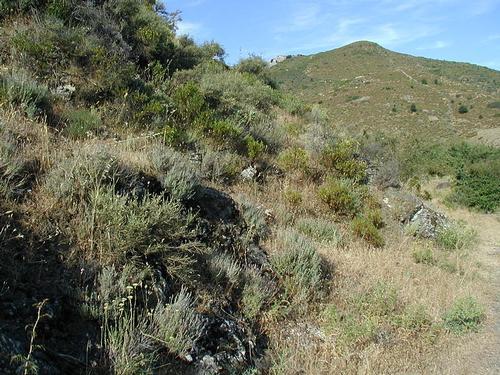
The rich Corsican flora is divided into three zones. The lower and higher Mediterranean zone up to a height of about 1000 meters is, among others, the realm of the maquis, the cork oak, olive tree and especially the sweet chestnut tree. The maquis is an area of mixed, very dense vegetation. The low maquis to about 500 meters is not so dense, but the high maquis is almost impenetrable with trees such as the holm oak, thorny trees and shrubs that can grow up to six meters. Furthermore, there are also strawberry trees, cistus, heather, myrtle and mastic tree. More than 20% of the surface of Corsica is still covered by maquis.
Pine forests lie between 1000 and 1800 meters. In the alpine zone above 1800 meters the vegetation becomes lower and sparse with grasses and small mountain plants such as alder. Lemons, kiwis and avocados grow on the eastern lowlands.
Notable trees are:
The Barbary fig tree is native to Central America. It is a member of the cactus family. It resembles a cactus with needles that are about 20-40 cm long and is covered with yellow flowers and fruits.
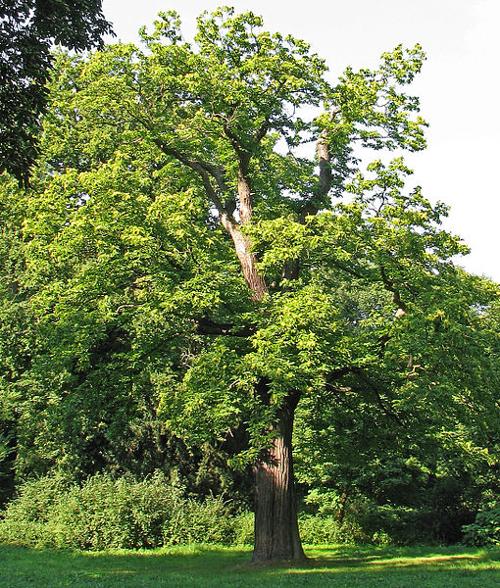 Sweet chestnut CorsicaPhoto: Darkone CC 2.5 Generic no changes made
Sweet chestnut CorsicaPhoto: Darkone CC 2.5 Generic no changes made
The sweet chestnut tree (see photo) is without doubt the most famous tree in Corsica. Introduced by the Genoese, the tree spread rapidly across the island. Chestnuts are used in a variety of local dishes.
The cork oak can reach a height of 15-20 meters. Every ten years the bark is removed from the tree and corks are made from it. Cork oaks are mainly found in the southern part of the island.
The holm oak can reach a height of about 15 meters. Due to the many forest fires, the holm oak often occurs as a kind of shrub.
The olive tree that is still used for olive oil and agaves grows along the coast. Along rivers and roads we find the eucalyptus tree. Most of the forests in Corsica consist of the Laricio or Corsican pine. These pine trees can grow up to 50 meters high. Some trees are over 800 years old. Corsica is a paradise for flower lovers. Special varieties are the yellow broom, the rock rose and on slopes the crested hyacinth and the "Illyrian" lily, which only occurs in Corsica and Sardinia. Many types of edible mushrooms grow in Corsica (including porcini mushrooms, stone fungi, yolk fungi) but also twelve poisonous species.
Forest fires are the order of the day in summer. Three quarters of all forest fires in France occur in Corsica! On average, about 10,000 ha of forest burns down every year, often when the mistral is blowing.
Animals
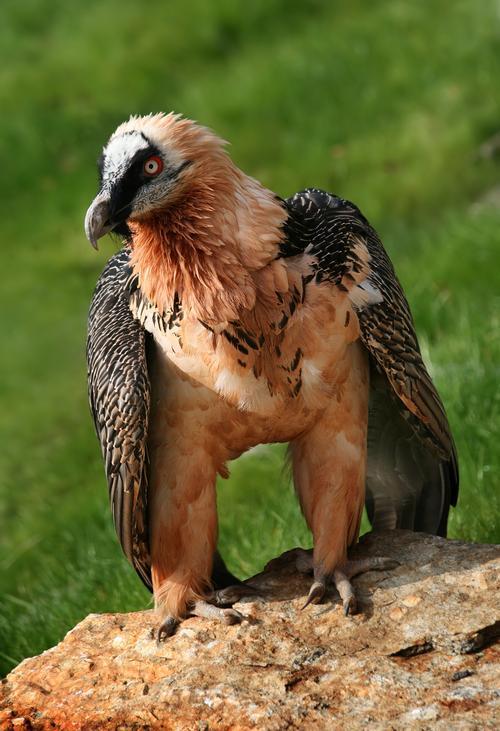
Hundreds of species of animals live in Corsica, including many bird species. Most of the animals you see while in Corsica are domesticated animals such as pigs, cows, goats, sheep and donkeys. Yet the island has some special inhabitants. Trout and eel live in the mountain streams and the Corsican black salamander and the Corsican euprocte, a type of newt without vertebrae and lungs, live on the banks of the lakes and on the river banks. There are no dangerous snakes in Corsica, but there are poisonous spiders. Small black rats are most common in the small islands around Corsica. Corsica is very rich in insects including 40 species of native damselflies and 53 species of native spiders.
The Audouin's seagull no longer occurs on the European continent, but it is still found on islands such as Corsica, Sardinia and the Balearic Islands. The bearded vulture or "altore" has a wingspan of about three meters. One of the rare native birds is the Corsican nuthatch, which was not discovered until the late 19th century.
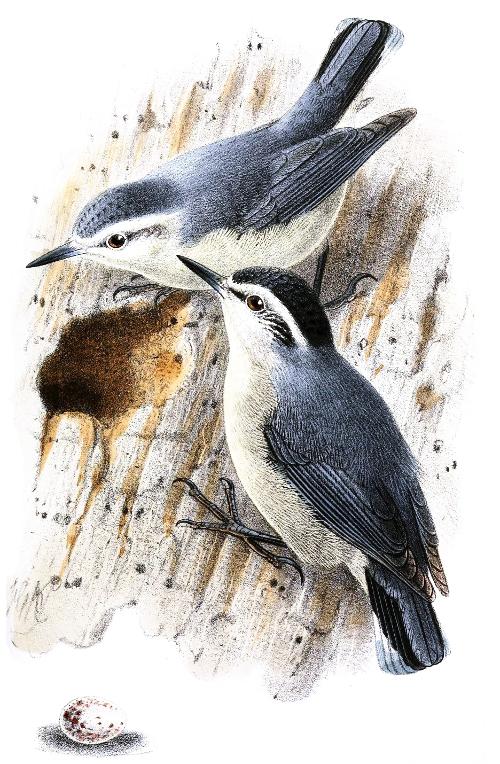 Corsican NuthatchPhoto: Public domain
Corsican NuthatchPhoto: Public domain
Linnets, thrushes, whinchat, robins, blackbirds, Sardinian warblers, bearded grass sparrows and goldcrests can be found in the maquis. Hermann's tortoise is one of the rarest reptiles in France, but still quite common in Corsica. The animal mainly lives in the maquis and can live to be 60-80 years old. The osprey is a beautiful but rare bird of prey, of which about 20 pairs breed in Corsica. In 1973 there were only three. The crested cormorant likes to nest in colonies on the rocky coast and on the islands around Corsica. Wild boars live mainly in the maquis and in the forests. These omnivores are mainly hunted in winter. Furthermore, there are thirty bat species living on Corsica, including the large free-tail bat.
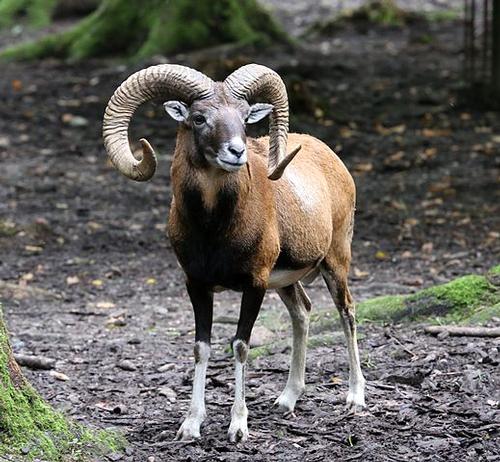 European mouflon in CorsicaPhoto: Rufus46 CC 3.0 Unported no changes made
European mouflon in CorsicaPhoto: Rufus46 CC 3.0 Unported no changes made
The European mouflon has been living in Corsica for eight thousand years, but is threatened with extinction. In summer, the 500 surviving specimens live at high altitude in the mountains and in winter they come down to forage for food. About 150 fish species live in the waters around Corsica. About 50 species are caught and traded, including wolffish, sardine, sunfish, scorpionfish and sea bream. Protected species are swordfish, porpoise, grouper, moray eel and spurdog. The Corsican spiny lobster is famous, which is one of the tastiest in the Mediterranean.
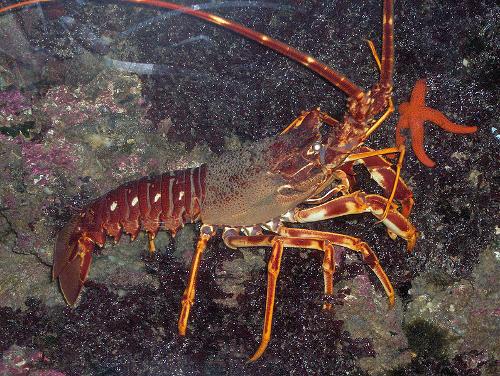 Corsican spiny lobsterPhoto: Georges Jansoone (JoJan) CC 3.0 Unported no changes made
Corsican spiny lobsterPhoto: Georges Jansoone (JoJan) CC 3.0 Unported no changes made
Sources
Corsica
Lannoo
Corsica
Lonely Planet
Corsica
Touring/Lannoo
Driessen, J.W. / Corsica
Elmar
CIA - World Factbook
BBC - Country Profiles
Copyright: Team The World of Info